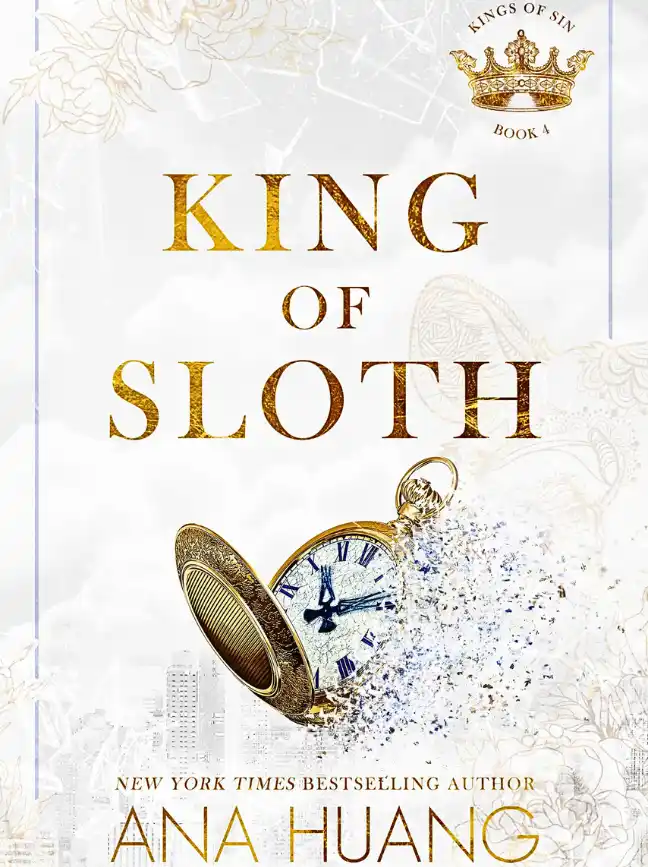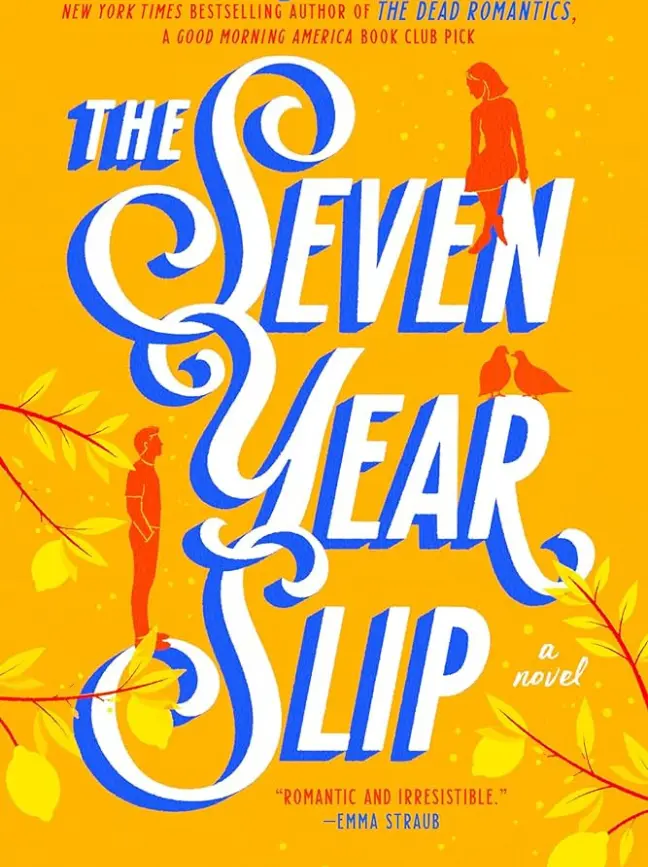How Awe Helps Us Understand the Cycle of Life and Death
What do you think has become of the young and old men?
And what do you think has become of the women and children? They are alive and well somewhere,
The smallest sprout shows there is really no death,
And if ever there was it led forward life, and does not wait at the end to arrest it, And ceased the moment life appeared.
All goes onward and outward. And nothing collapses,
And to die is different from what any one supposed, and luckier.
WALT WHITMAN
In our twenty-six-culture study, no matter their religion, politics, culture, level of medical care, or life expectancy, people told stories about being awestruck by the beginning of life and its early unfolding
—and about being moved in transcendent ways by watching the end of life.
Life
Our cycle of life, compared to that of other primates, is a defining feature of our evolution. Because of the narrowing of the female pelvis, brought about by our species’ shift to walking upright, and the disproportionate size of the human head to accommodate our large, language-producing brain, our infants are born premature. In fact, wildly premature, taking ten to fifty-two years to reach semifunctioning independence, if there is such a thing. Our
hypervulnerable babies require years of intensive face-to-face, skin-to-skin care, networks of caregivers, a safe home, and enculturation just to survive.
Childbirth is the most undervalued act of courage in human history. Our twenty-six-culture study revealed just how extraordinary the appearance of new life is, giving rise to epiphanies of different kinds. People were struck by the raw fact of how a sperm and ovum create life, one emerging from a mother’s womb, as hinted at in this story from Russia:
It was the birth of my daughter. The appearance in light of another person. It is a miracle! Life, which you gave, pains which passed for the appearance of a new person. The first cry. Facing that new life. I froze, dumbfounded. It is difficult to convey the feelings I felt at that moment.
Some wrote of their amazement at their baby’s sublime beauty, as in this forgivably hubristic example from Mexico.
The birth of my second daughter, and she was a very pretty girl when she was first born, contrary to all other babies who don’t look good recently born.
Babies have a transfixing physicality: a baby’s hypnotically large forehead, anime-like eyes, little lips, and small chin capture onlookers in awe-like absorption. In this astonished state, the besotted caregiver forgets about the spit-up on their new blouse, the years of sleep deprivation, the involuntary sexual asceticism, and the disappearance of evenings out for dinner or with friends. I can still recall with awe the first time I looked at my daughter Natalie’s face, just as she emerged from Mollie’s womb, and how in her eyes and mouth and cheekbones and forehead—a system of facial morphology built up by sixty genes—I could see the geometries of generations of grandmothers, grandfathers, aunts, uncles, and a mother, shaping the features and contours of her face.
People spoke of the arrival of a new life as a gift, as in this example from Indonesia:
Witnessing the birth of my firstborn. It had been a long wait, about eight hours, from eleven p.m. to seven a.m. I was there with my wife throughout her painful labor. But when he finally emerged, I just couldn’t believe what a beautiful and wonderful gift God has bestowed on my wife, and I just couldn’t stop smiling and feeling awe and grateful to God for giving us a son.
For some, the arrival of a child triggered epiphanies about time, as in this story from South Korea:
That vague wonder that I felt when I was pregnant turned into wonder and awe of life as I gave birth. I also felt the expectations and joy for the next generation, as it is the law of nature. It was also an opportunity to realize how precious life is.
And about the responsibilities of protecting a new life, as in this story from Japan:
When I gave birth to a child for the first time, I was deeply moved by the realization and responsibility of becoming a parent, as well as the preciousness of life. From now on I felt that I would desperately live just to protect this life.
Many narratives referred to the bodily responses of awe, the tears, chills, tingling, and the urge to hold and touch and feel skin-to-skin warmth. Common to the narratives were references to a sense of transcendent, boundary-dissolving connection whose neurophysiology is now becoming understood. Recent research finds that both parents show elevated levels of
oxytocin, that neuropeptide that promotes boundary-dissolving openness and connection, six months after the birth of their first child. And a region of the mammalian hypothalamus, the MPOA, activates patterns of parenting in both women and men, whether heterosexual or gay. The MPOA is responsive to the sights and sounds of infants—the skin, cooing, cuddling, touch, mutual gaze, and fragrance and softness of the tops of their heads. This region of the brain activates dopamine release and deactivates the threat-sensitive amygdala. This synchronized neurophysiology of parent and child underpins the shared attention and intersubjectivity so common in experiences of awe across the wonders of life.
In many stories, people found their own moral beauty in the birth of a child, as in these narratives from Russia and China:
The birth of my son. It was nine years ago. I was happy with the maternity ward. I wanted to hug the entire world.
The birth of my child made me truly have the sense of awe. It made me see the miracle of life and it also made me more tough and tolerant when I interacted with people around me.
Some stories revealed how the arrival of a child triggers the nesting instinct humans express as childbirth approaches, which this Brazilian dad finds in, of all things, buying new furniture and filling out forms!
The birth of my first son. In 1992. I was in Natal Rio Grande do Norte. With me was my first wife. Before, I bought new furniture to welcome him! Right after, I took care of making him a health insurance plan.
There are a limited number of species, outside of bird species, that “nest” like we do. The nests they create are where offspring are born, and
out of which community members forage for food and return and eat together in safety. The “nests” we create often contain cultural archives of awe—music, lullabies, books, images of people of moral beauty, mobiles with beautiful geometries, wallpaper with life patterns. Those nests become home, an entrance into a culture’s ways of awe.
And what is true of new caregivers is true of grandparents, so often awestruck by the arrival of grandchildren, as in this story from France:
The birth of my grandchild was a moment of awe and full of emotion. I was present during the ultrasound scan and I saw this wonderful tiny human being. Even though I am a mother of six children, I lived this moment with awe. I was moved, full of joy, I cried as for the birth of my children. I left the maternity ward overexcited, I wanted to shout my joy to the whole world and was overwhelmed at the same time. These moments were very rich in emotion.
We are the only primate species in which women live significantly beyond the age of menopause. This shift in life expectancy over the history of our species ensured that grandmothers, experts in giving birth and raising offspring, lived long enough to share their wisdom and physical talents with young women having children at the average age of nineteen years or so in hunter-gatherer times and more recently in our history. The vulnerability of our offspring requires intensive care from many quarters, including aging grandparents, who hopefully find new forms of awe in this next wave of loving support for children.
The wonders and horrors of childbirth led Nancy Bardacke to a remarkable career in promoting more awe-filled births. Bardacke was transformed in the late 1960s by the natural childbirth work of Fernand Lamaze. At that time, U.S. culture had overmedicalized childbirth, so much so that laboring women were often drugged to full unconsciousness while giving birth. They often didn’t recognize their new babies upon first seeing
them. Nancy worked as a midwife, and then created a mindful birthing program that has brought thousands of humans into the world. She has seen it all, from placing a neonate she knew was soon to die in the arms of his parents, to thousands of high vagal, oxytocin-rich births. When we spoke, she described her work as follows.
The birth . . .
You see the head crown, and then the eyes and face slowly appear. WOW. Each time I don’t believe that the baby will come out. And each time it does. It is a miracle. It is a privilege to witness life become.
My work is like a child . . . it didn’t belong to me . . . it came through me . . .
Birth and death are metaphors for everything. Breathe in, I am here.
Breathe out, I expire. WONDER!
In the right circumstances, childbirth is the very beginning of years of exploration of the eight wonders of life. The way in which we play introduces children to wonders of different kinds—moving in unison in dance, camping, music, painting and drawing wild forms, and discovering sacred geometries. Childhoods rich with awe are good for the child. In one illustrative study, five-year-olds who watched an awe-inspiring nature video, compared to children in a control condition, were more imaginative in how they played with a new toy and chose smaller circles—another way to measure the small self—to describe themselves. My collaborators Dante Dixson, a professor at Michigan State University; Craig Anderson; and I have found that as children develop, regular feelings of awe animate their curiosity in school and predict better academic performance for students in underresourced neighborhoods.
One of the most alarming trends in the lives of children today is the disappearance of awe. We are not giving them enough opportunities to
discover and experience the wonders of life. Art and music classes do not make the school budget. The free-form play of recess and lunchtime is being replaced with drills to boost scores on tests that have only modest relation to how well kids do in school. Teachers must teach to those tests rather than engage students in open-ended questioning and discovery, where the unknown is the centerpiece of the lesson. Every minute is scheduled. And the natural world children are experiencing is undergoing mass extinctions. It’s no wonder that stress, anxiety, depression, shame, eating disorders, and self-harm are on the rise for young people. They are awe-deprived.
Rachel Carson saw what was happening as early as the 1950s. She knew the importance of awe, and over her life she fought pharmaceutical companies and the gender and sex biases of science and journalism, and transcended the early death of her sister, her own cancer, and near-continual financial hardship to write about her favorite systems in nature, warning the world of pesticides like DDT and launching in important ways today’s efforts in the United States to save our planet.
When she realized the ways in which young people were being deprived of awe, she offered an alternative approach in a remarkable essay from Woman’s Home Companion, placed in between recipes for mayonnaise and potato salad and ads for Best Foods. In her essay “Help Your Child to Wonder,” Carson lays out an awe-based approach to raising children.
It begins with a story of awe about her twenty-month-old nephew, Roger, whom she would raise because of her sister’s early death. They wander down to the Atlantic Ocean one wild, stormy night. Getting soaked and risking colds, they laugh at the frothy waves, finding a “spine-tingling response to the vast, roaring ocean and the wild night around us.” Later, on a rain-drenched walk in Maine woods, Roger delights in the now spongy texture of the lichen on rocks: “getting down on chubby knees to feel it and running from one patch to another . . . with squeals of pleasure.” I bet they sounded like weee and wow amid longer periods of open-mouthed, wide-eyed silence.
Carson observes “that true instinct for what is beautiful and awe-inspiring is dimmed and even lost before we reach adulthood.” She wishes that each child would live according to “a sense of wonder so indestructible that it would last throughout life, as an unfailing antidote against the boredom and disenchantments of later years, the sterile preoccupation of things that are artificial, the alienation from the sources of our strength.”
How can we live a life of awe with young children? How can we do it by ourselves? First, Carson suggests, find awe and wonder in our senses. In simple, unfettered, slowed-down acts of looking. At clouds. Up at the sky. In listening to the natural world. The wind. There you will find, in Carson’s words, “living music,” “insects playing fiddles” in “insect orchestras.”
She, like Edmund Burke, suggests opening our minds to vastness. Here’s one way: trace an insect sound to its source. We can do the same for other systems of nature—thunder, waves, rain, the wind, a cloud, pine needles lying glistening on the ground, a bird call, the outlines of hills or mountains.
Distrust acts of labeling and classifying—the currency of the default self. Avoid reducing natural phenomena to words. Instead begin with mysteries. Where does an insect’s sound go? What is the mystery of a seed? Approach the natural world (and life) with this question: What if I had never seen this before?
Mysteries awaken us to systems. Look to the sky and listen for migrations of birds. Follow the tides. Watch the growth of a seedling and its relationship to the earth. Take in the ground of a forest, the humus, fungi, and tree roots, which we now know to be communicating via slow neurochemical signals, intertwined in ecosystems of collaborating species.
In these wonder-filled explorations, we encounter the epiphany that in “those who dwell . . . among the beauties and mysteries of the earth are never alone or weary of life.” Carson ends this astonishing essay, written while she herself was battling cancer, by quoting oceanographer Otto Pettersson, a person of moral beauty for her. Pettersson made groundbreaking discoveries in the study of the biology of fish, tides, ocean depths, and large waves underneath the surface of the sea. Nearing his own
death at ninety-two, Pettersson observed: “What will sustain me in my last moments is an infinite curiosity as to what is to follow.”
Death
Roshi Joan Halifax is a hero of twentieth- and twenty-first-century stories of awe. In her early twenties, she protested in the U.S. civil rights movement. For her PhD work, she studied the Indigenous Dogon people in Mali, and later the Huichol of Mexico, and witnessed how mystical awe is archived in story, ritual, ceremony, music, and visual design in Indigenous traditions thousands of years old. Frustrated with graduate school, though, in the 1960s she did what most alienated PhD students only think about doing: she bought a Volkswagen bus, took it on a ferry to North Africa, and drove by herself through villages and countryside, in search of a more communal spirit. Talk about an awe walk.
During her brief marriage to Stanislav Grof in the 1970s, she carried out some of the early experiments with LSD therapy. She collaborated with Joseph Campbell in his work on mythologies. Inspired by Buddhist monk Thich Nhat Hanh, she trained for years to become a roshi, or monk, very uncommon for a woman. Today Roshi Joan leads the Upaya Zen Center in New Mexico, which trains people in contemplative approaches to death.
Roshi Joan’s book Being with Dying tells the story of what she learned from more than four decades of this work, in particular with young men dying of AIDS. It is well chronicled how dying has been overmedicalized, moved into sterile, fluorescent-lit hospital rooms with machines and televisions and half-eaten trays of “food” nearby. The rituals, ceremonies, stories, music, song, touch, and contemplative practices that enable the dying and those they love through this transition do not make their way into hospital rooms—the antithesis of awe-based, intelligent design. Roshi Joan’s life work is to return us to the wonders of watching others die.
In being with the dying, a first principle is not knowing. Quiet the chatter of the default self. We don’t truly know what dying is like. Nor, really, what happens after. Be open. Observe. Wonder.
A second is bearing witness. Let the dying guide the experience. When facing the uncertainty, fear, and horrors of dying, our tendency is to take action, provide a hopeful interpretation, reframe, or turn away. Instead, Roshi Joan says, just be there. Listen. Sit in silence. Rest your hand on the arm of the dying. Breathe. And follow where the dying will take you.
Finally, find compassionate action. Be open to suffering and its companion, kindness. Studies show that we respond to others’ pain in one of two general ways: either with our own distress, which leads us to turn away in cortisol-fueled flight, or with compassion, the latter being better for those who suffer and those who witness such suffering. In a practice Roshi Joan teaches, you breathe in a person’s suffering, and then breathe it out transformed. The cycle of life and death is one of many, like that of our breathing.
In watching Rolf pass that last night of his cycle of life, with pulsating fields of light pulling him away into something vast, I was guided by this wisdom, thanks to reading Roshi Joan’s book and being in conversation with her. I felt open to witnessing this part of the cycle of life. I wondered about the thoughts and feelings that were to be the last of his living brain and body, what Virginia Woolf called the “flickerings of that innermost flame which flashes its myriad messages through the brain.”
Seeking to understand those “flickerings,” scientists today are studying the cellular activity in the brain that follows death. Others with a historical bent have compiled stories about consciousness after decapitation, like that attributed to Charlotte Corday. After being beheaded at the guillotine in 1793, Corday showed flushed indignation upon being slapped by her executor. I searched the literature, seeking I know not what exactly, and found solace in the new science of near-death experiences (NDEs).
This science is based on stories of people like Yuria Celidwen who have come back from the brink of death. These are narratives of people who have survived near-fatal heart attacks, strokes, the trauma of a car wreck, or lying
broken on a slab of granite after a fall while rock climbing. NDE stories sound like stories of awe, and in fact surfaced in our twenty-six-culture study, as in this story from Australia:
In childbirth I was declared as deceased. While I was in a state of altered consciousness I felt the most incredible sense of peace and calmness. I was watching what was being done to my body to revive me and I remember thinking “Why don’t they stop . . . I am at peace with myself and the world.” My then husband rushed in and I knew that it wasn’t my time as my two young daughters needed me. I immediately returned to my body. It then took around seven hours to deliver my son Kyle.
In the scientific literature on NDEs, as in the story above, people report a vanishing of their default selves. They are merging with a larger force or form of consciousness that feels infinite, pure, fundamental, and benevolent. The unfolding of experience does not seem governed by the temporal and spatial laws of our default mind. Transcendent emotions wash over them, like compassion, love, and bliss. And awe. I sensed this in my brother’s face that last night he was alive.
Months after Rolf’s death, I traveled to Japan with Mollie. In the dusk of our first day in Kyoto, amid heavy rains that followed a record typhoon, I made my way to a cemetery on a hill outside the city. Japanese families honor the deceased in plots of granite tombstones, which stand next to one another, gather moss, and slowly lean and fall to the ground with time—the Japanese principle of wabi-sabi, that the evolution of all forms, from the natural to “man-made,” follows a cycle of creation, birth, growth, decay, and death. Near an earthy, tangled bank of overgrown hills, I stood in front of an arrangement of about fifteen tombstones, three rows in total, each about two feet tall, some inscribed in Japanese, all uniquely patterned. One, a smaller marker with a plain granite face, leaned and tilted into a taller one just next to it. They rested together, touching in the rain.
That night watching my brother’s life cycle end left me awestruck, and then deeply awe-deprived. I went in search of awe to find how to make my way again. In experiences of awe across the eight wonders of life, I learned that there is more to our existence than what ends with the last breath of the body. That I could feel and hear Rolf in gentle breezes and in being embraced by a powerful, warming sun. And that he and I shared some kind of awareness in spaces of feeling beyond what we ordinarily see and hear. And that the people we love, and our companions in a life of awe, remain with us in even more mysterious ways after they leave, enabling an opening to new wonders of life. And that these lessons can be found in seeking awe
—which leads us to our last chapter.








